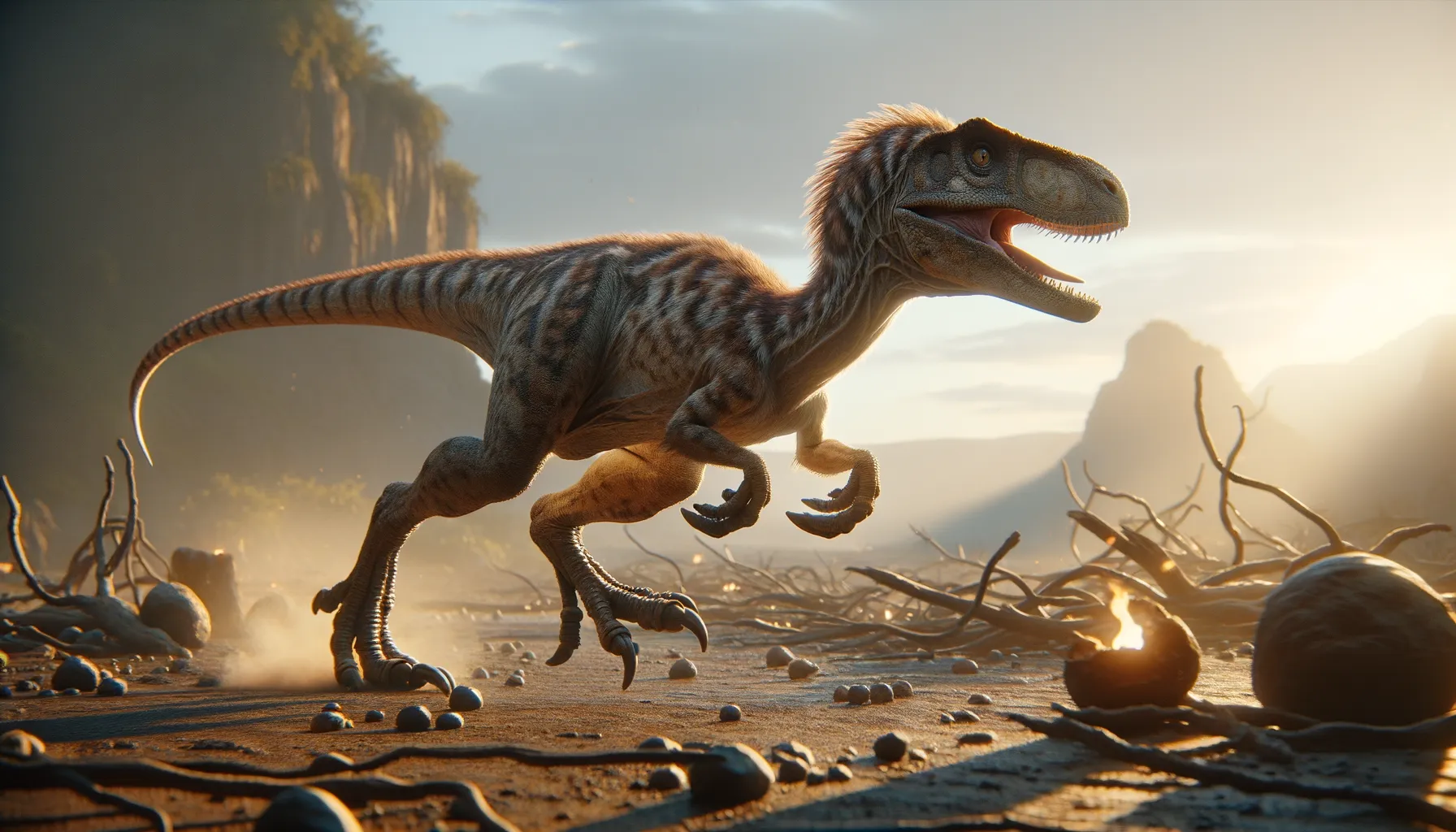
Saurornitholestes
Swift and stealthy, a Cretaceous predator!
Period
Cretaceous
Length
Approximately 1.8 meters long.
Height
About 0.9 meters tall.
Weight
Around 15 kilograms.
Saurornitholestes was a small, agile theropod dinosaur closely related to Velociraptor. Living during the Late Cretaceous period, this predator was characterized by its speed and sharp claws. It likely hunted small to medium-sized prey and might have had feathers. Fossil evidence suggests it had keen senses, making it an efficient hunter of its time.
Diet
Saurornitholestes was a carnivorous dinosaur that likely preyed on small to medium-sized animals. Its diet may have included small reptiles, mammals, and possibly baby dinosaurs. The structure of its teeth indicates it was adapted to cutting through flesh.
Hunting
Saurornitholestes was likely an active predator, using its speed and agility to capture prey. It may have hunted alone, ambushing unsuspecting prey with its powerful hind limbs. Its sharp claws and teeth were effective tools for gripping and subduing prey.
Environmental challenges
During its time, Saurornitholestes faced various environmental challenges such as climate fluctuations and landscape changes. The Late Cretaceous was marked by volcanic activity, which could affect local ecosystems. These dinosaurs had to be adaptable, finding stable food sources despite the dynamic environment. Competition for resources with other predators would have required strategic hunting adaptations.
Speed
It was quite swift, possibly reaching speeds up to 50 km/h.
Lifespan
Exact lifespan is unknown, but likely similar to modern birds.
First discovery
Found in Alberta, Canada, in the 1970s.
Fun Facts
- Saurornitholestes was a small dinosaur that lived around 75 million years ago during the Late Cretaceous period.
- This dinosaur's name means 'lizard-bird thief', reflecting its swift and agile nature.
- Saurornitholestes was a theropod, which means it was a two-legged predator, similar to its more famous cousin, Velociraptor.
- It was about the size of a dog, approximately 5 to 6 feet long, making it one of the smaller predators of its time.
- The fossil evidence suggests that Saurornitholestes had keen senses and sharp claws, perfect for hunting small prey.
- It lived in what is now North America, with fossils found primarily in areas like Alberta, Canada.
- Saurornitholestes is believed to have had feathers, which supports the idea that many dinosaurs were bird-like.
Growth and Development
Saurornitholestes, like many theropods, likely experienced rapid growth during juvenile stages. Fossil evidence suggests it hatched from eggs and possibly grew quickly to fend off predators. During development, its physical traits like claws and teeth would become more pronounced, helping it transition from a dependent hatchling to an independent hunter.
Habitat
Saurornitholestes inhabited diverse environments, including forests, plains, and wetlands. The Late Cretaceous period allowed for varied ecosystems, providing both hunting grounds and shelter. Its ability to thrive in different habitats may have been a key to its survival amidst environmental changes. Such adaptability would have been critical in coexisting with other species.
Interaction with other species
Saurornitholestes likely interacted with a range of species, both as a predator and possible prey. Competition with other carnivorous dinosaurs for food was likely common, influencing its hunting strategies. It might have also had symbiotic relationships with smaller species, such as scavengers. Fossil evidence of different species in the same regions suggests complex ecological interactions.
Natural lifespan
Its natural lifespan is thought to be similar to that of modern birds, around 10-20 years.
Reproduction
Saurornitholestes likely reproduced by laying eggs, similar to other theropods. Nesting sites were chosen with care to protect eggs from predators and environmental threats. Parental care was possible, with adults potentially guarding the nests until the offspring were capable of independence. Hatchlings would have been vulnerable, requiring rapid growth and development.
Social behaviour
While evidence of pack behavior is limited, Saurornitholestes could have engaged in social interactions for hunting or protection. Its social structure might have been loose, with individuals coming together opportunistically. Communication could have been through vocalizations and visual displays, as suggested by possible feather presence.
Fossil locations
Fossil remains of Saurornitholestes have primarily been found in Alberta, Canada. Additional discoveries have been made in Montana, USA, providing insight into its geographical range. These fossil sites offer a glimpse into its environment and role within Late Cretaceous ecosystems. Ongoing excavations continue to expand understanding of its distribution.
